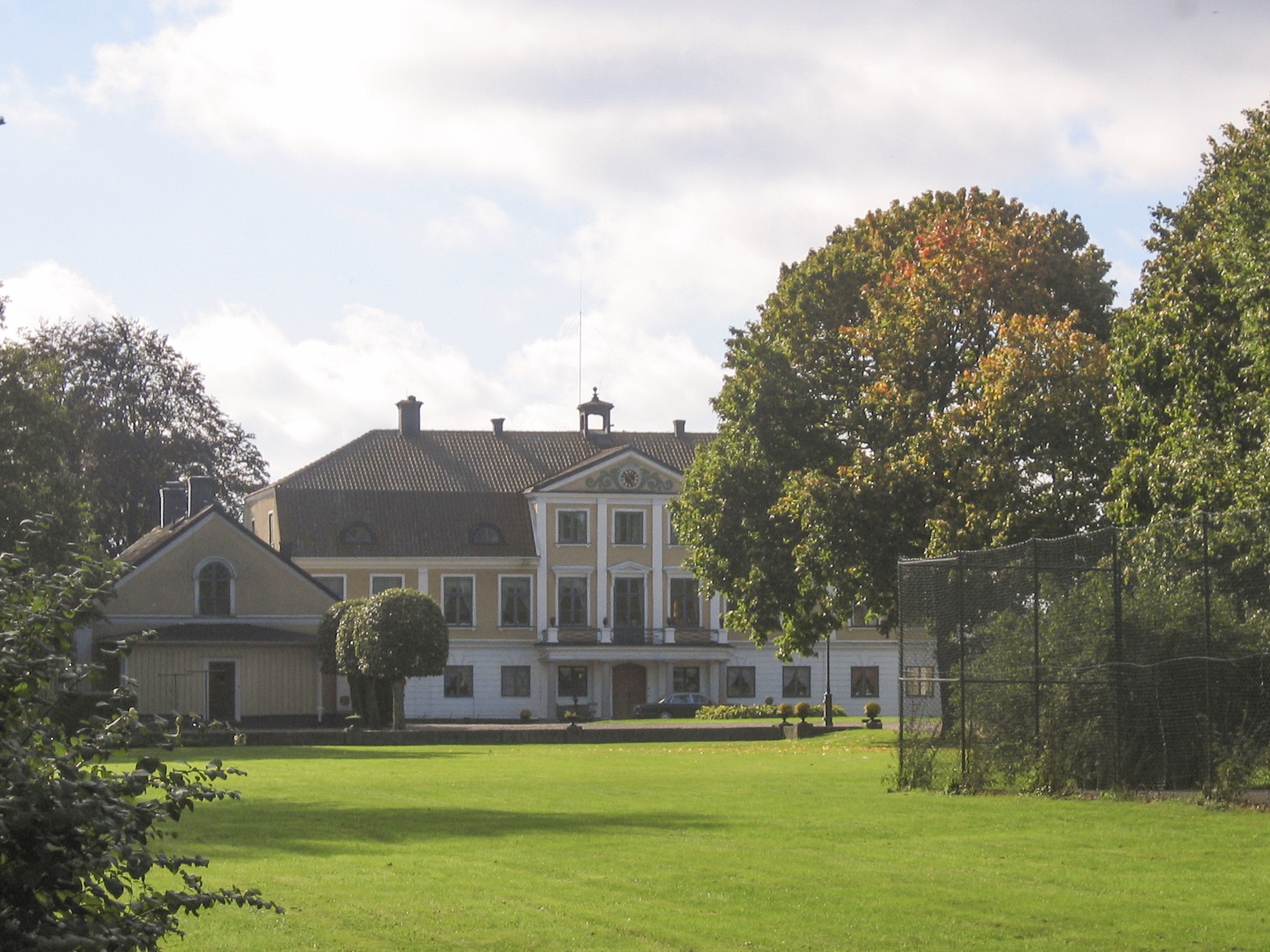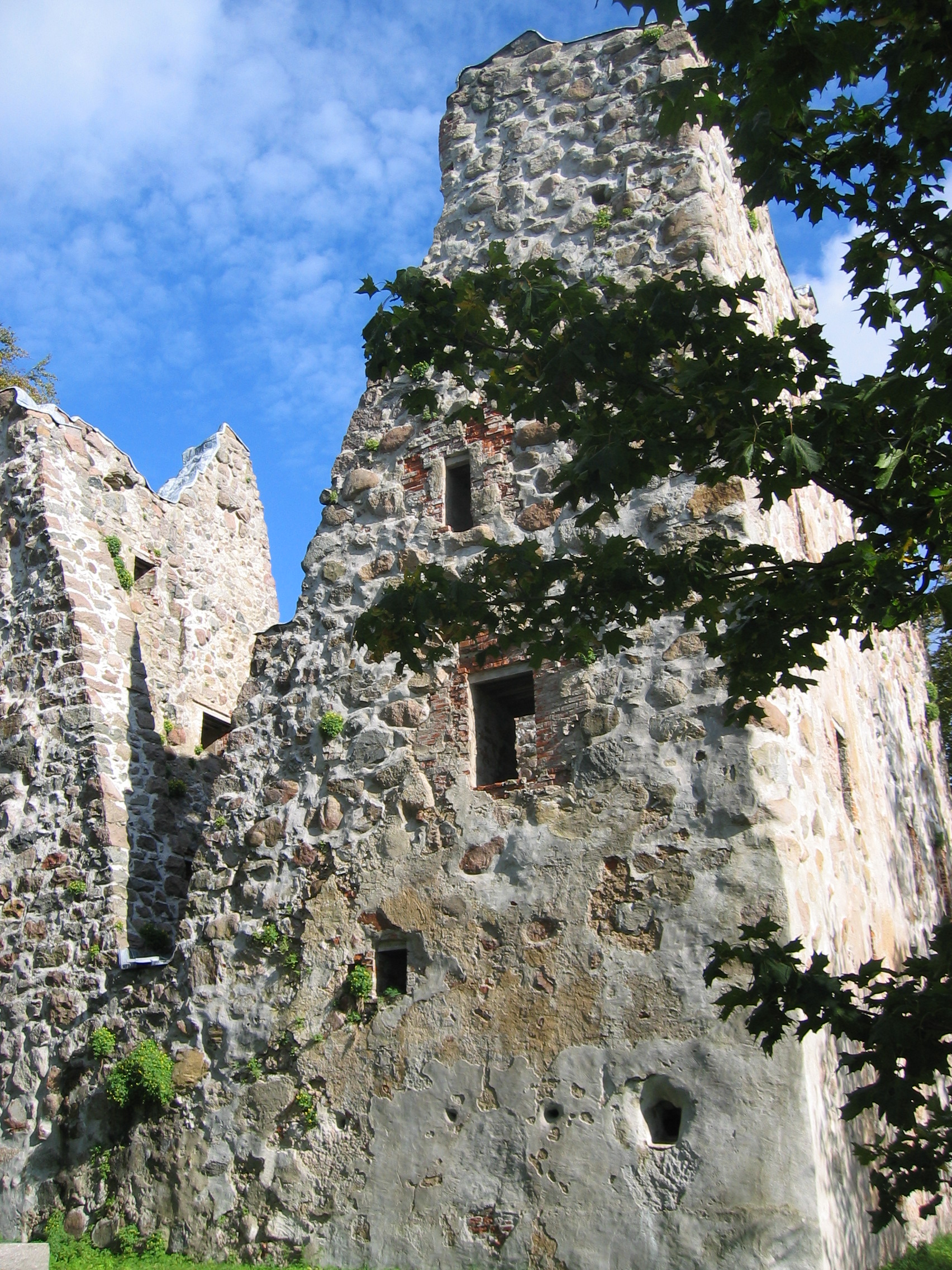Bergkvara, Växjö on:
[Wikipedia]
[Google]
[Amazon]


 Bergkvara is a
Bergkvara is a


 Bergkvara is a
Bergkvara is a manor house
A manor house was historically the main residence of the lord of the manor. The house formed the administrative centre of a manor in the European feudal system; within its great hall were held the lord's manorial courts, communal meals w ...
and ruined castle (''slottsruin''), located at the north beach of Bergkvarasjön ("the Bergkvara Lake") in Växjö
Växjö ( ) is a city and the seat of Växjö Municipality, Kronoberg County, Sweden. It had 70,489 inhabitants (2019) out of a municipal population of 95,995 (2021). It is the administrative, cultural, and industrial centre of Kronoberg County ...
, Sweden
Sweden, formally the Kingdom of Sweden,The United Nations Group of Experts on Geographical Names states that the country's formal name is the Kingdom of SwedenUNGEGN World Geographical Names, Sweden./ref> is a Nordic country located on ...
, and described in ''Nordisk familjebok
''Nordisk familjebok'' (, "Nordic Family Book") is a Swedish encyclopedia that was published in print from between 1876 and 1993, and that is now fully available in digital form via Project Runeberg at Linköping University. Despite their consi ...
'' as "one of Sweden's oldest mansions in Värend
Värend was in the Middle Ages the most populous of the constituent "small lands" of the province Småland, in Sweden. Early on, Växjö became its center. Around 1170, Värend broke out of the diocese of Linköping, and formed its own diocese of ...
, Bergunda and Öjaby parishes, Kinnevalds district and Kronoberg County, 6 km. west of Växjö
Växjö ( ) is a city and the seat of Växjö Municipality, Kronoberg County, Sweden. It had 70,489 inhabitants (2019) out of a municipal population of 95,995 (2021). It is the administrative, cultural, and industrial centre of Kronoberg County ...
".
History
Bergkvara, a former "ornamental landscape", was bought by theTrolle
The House of Trolle (sometimes in Danish ''Trold'') is the name of a Scanian noble family, originally from Småland, in Sweden. The family has produced prominent people in the histories of Denmark and in Sweden since the Middle Ages and is associat ...
family in the 15th century and rebuilt as a stone castle in the 1470s by Arvid Trolle
Arvid Birgersson, Lord of Bergkvara (c. 1440 – 20 February 1505) was a Swedish magnate and politician in the last decades of Middle Ages. He was justiciar of Östergötland and then of Tiohärad, as well as a Lord High Councillor of Sweden, and ...
. The castle was originally surrounded by two moat
A moat is a deep, broad ditch, either dry or filled with water, that is dug and surrounds a castle, fortification, building or town, historically to provide it with a preliminary line of defence. In some places moats evolved into more extensive ...
s, serving as a system of defense. In the late 17th century, the inner moat had been partly filled and served as a fishpond while the outer moat served more as a ditch marking the limit of the castle bailey. By this time the residence had moved to the outer moat, as the tower house had lost its original function.
In 1542, the castle was ransacked, plundered and set on fire after a long siege during the Dacke War
The Dacke War ( sv, Dackefejden) was a peasant uprising led by Nils Dacke in Småland, Sweden, in 1542 against the rule of Gustav Vasa. Dacke and his followers were dissatisfied with the heavy tax burden, the introduction of Lutheranism, and the ...
(''Dackefejden'') by the peasant revolt of Nils Dacke
Nils Dacke (died 1543) was a Swedish yeoman who was the leader of a mid-16th century peasant revolt in the historic province of Småland in southern Sweden. The resulting Dacke War ( sv, Dackefejden) was fought against King Gustav I of Sweden ...
, and became ruined in the 18th century. In late 18th century, a new main building was under construction and finished in 1794.
References
{{DEFAULTSORT:Bergkvara, Vaxjo Manor houses in Sweden Ruined castles in Sweden Buildings and structures in Växjö